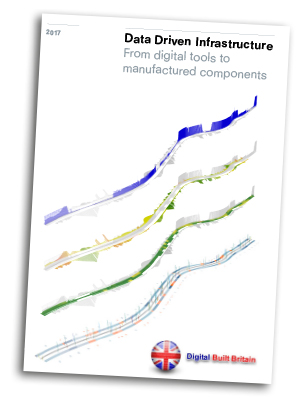A new strategy which would help standardise the design of roads and rail projects and make it more viable to mass manufacture key components, has been drawn up by integrated design and operations consultant Bryden Wood, at the behest of a government unit.
Digital Built Britain asked the Holborn-based practice to draw up the strategy following a similar exercise for public buildings.
Jaimie Johnston, Bryden Wood’s director and head of global systems, has written the strategy focusing on horizontal infrastructure projects – Data Driven Infrastructure: From digital tools to manufactured components.
He also recently wrote Delivery Platforms for Government Assets: Creating a marketplace for manufactured spaces – which focuses on buildings.
Both of these documents provide a digital pathway to allow mass production of standard components for buildings and infrastructure which allows government to harness design for manufacture and in doing so help combat skills shortages.
Johnston says: “Government spends billions on built assets – schools, hospitals, etc. Structurally a lot of these buildings are not that different. To become more efficient and to make design for manufacture processes cost effective we need to adopt a common approach. That way we can provide volume.
“Similarly rail and roads have things in common – some of the elements of Crossrail, for example, are directly transferrable to roads. At a digital level the difference between road and rail is marginal.”
Johnston says that more design could also be carried out automatically: “Elements that were repeated such as gantries, you could easily teach a computer to design this.
“At the moment they are still designed manually. But artificial intelligence really is coming to design.”
“BIM in itself is an enabler. But If we are to meet government 2025 targets for productivity gains and costs reductions we will have to come up with a rapid low-cost way to do so.
“These digital strategies build on the work Bryden Wood has been doing for the Ministry of Justice which is embarking on a new prison building programme which will create 10,000 prison places. The MoJ is partnering with the Manufacturing Technology Centre in Coventry.
Design for manufacture and assembly is an approach which facilitates the adoption of more advanced, manufacturing led (as opposed to traditional construction) processes in the delivery of assets.
Jaimie Johnston is speaking at Digital Construction Week.
Image: Bobbrooky/Dreamstime

Government spends billions on built assets. Structurally a lot of these buildings are not that different. To become more efficient and to make design for manufacture processes cost effective we need to adopt a common approach. That way we can provide volume.– Jamie Johnston, Bryden Wood













